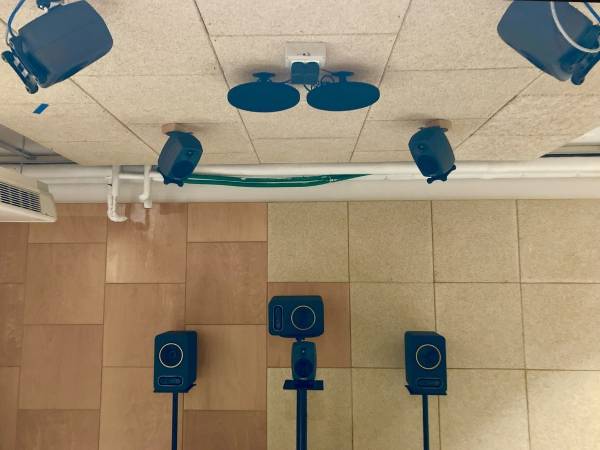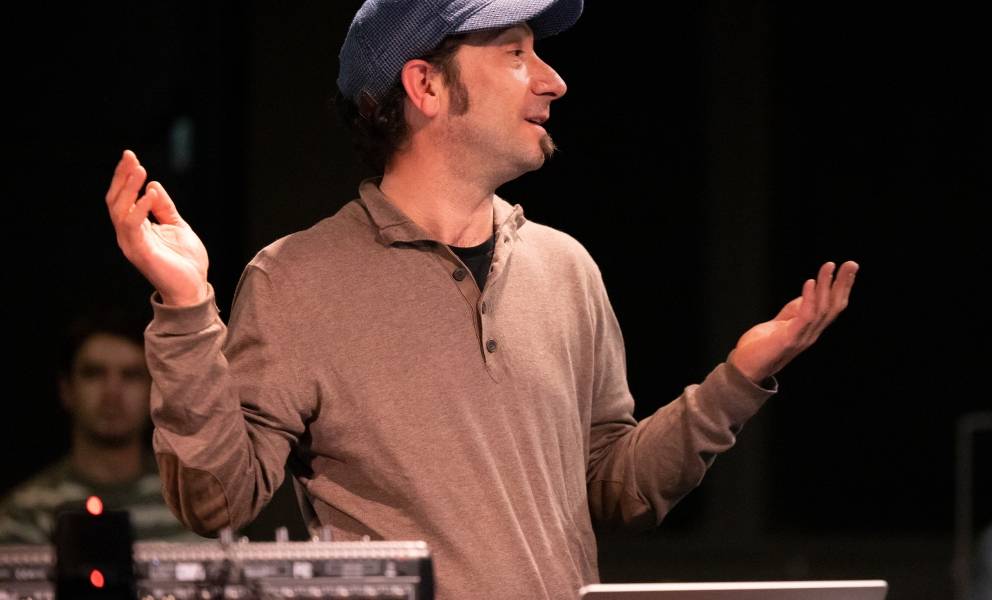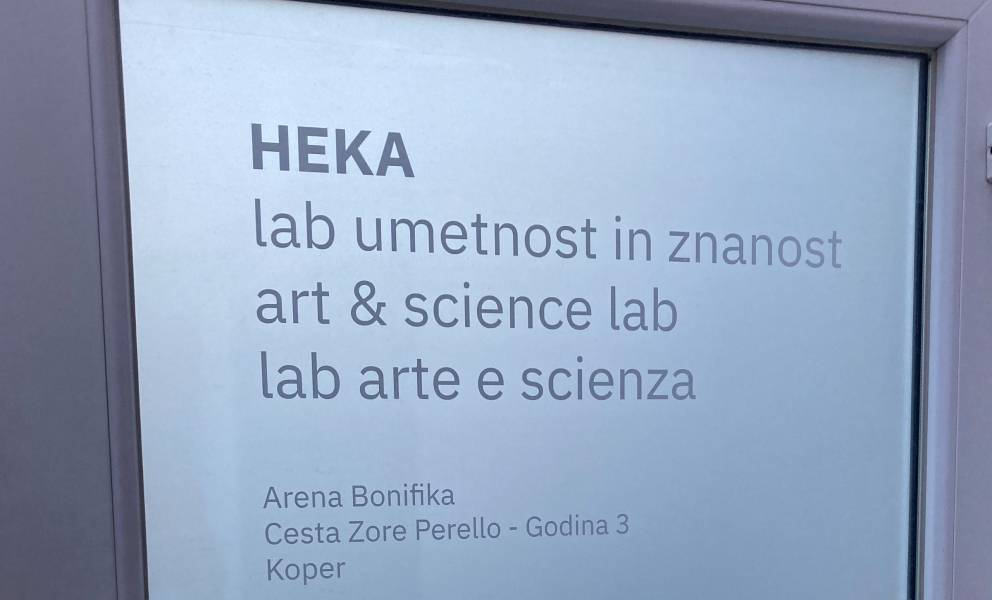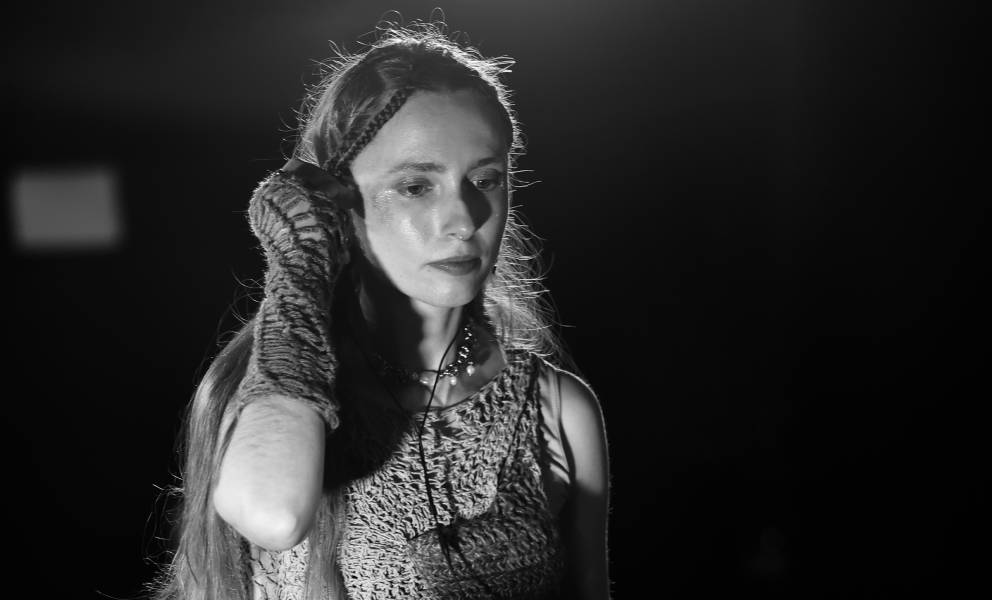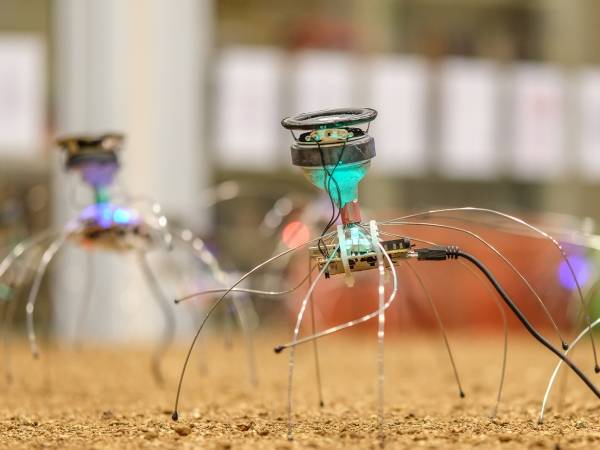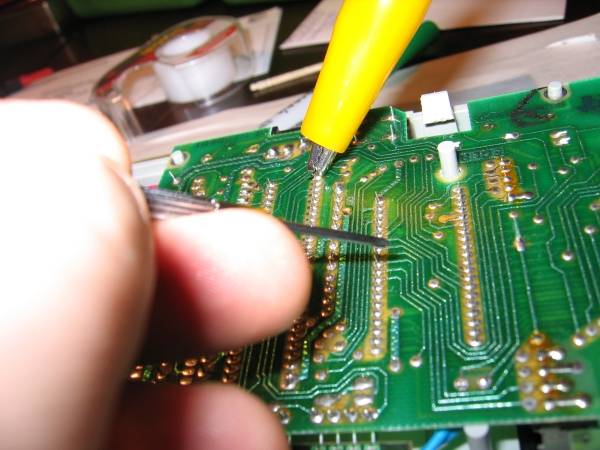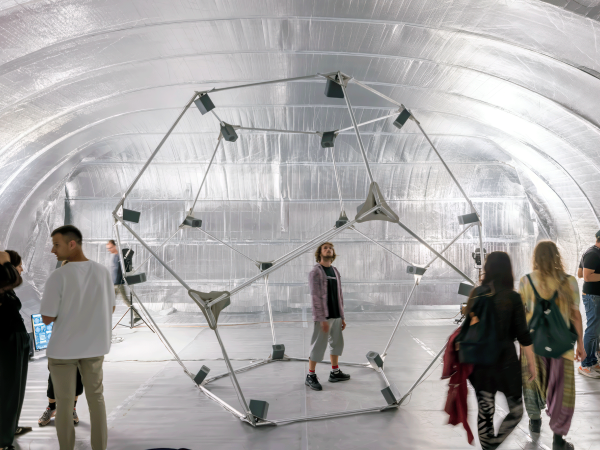9 Minuten
Katarina Gryvul talks with Mauricio Valdés (SLO), who has built a multifaceted career spanning research in acoustics, software design, electroacoustic, and experimental music, along with various artistic disciplines. His work ranges from solo instrumental performances to ensemble compositions and mixed media installations. He settled in Slovenia in 2011, starting as the music chair of the International Computer Music Conference and Artistic Director of the IRZU Institute. He was also the founding vice president of UltraSonic-Audio LTD. Since 2021, he has been the curator and head of R&D at the HEKA Art and Science Lab at PINA in Koper, Slovenia, where he mentors the resident artists at the S+T+ARTS Air EU project, along with partners like Sony CSL Rome, MSC from Stuttgart and Barcelona Supercomputer Center, among others. Additionally, he is the co-curator of the last two editions of the Festival IZIS. His work has been showcased in more than 20 countries at music festivals, conferences, and symposiums related to music and technology. In August 2022, Mauricio Valdés was appointed director of Zavod Suigeneris.
1. Can you describe the concept of HEKA and its mission in your own words?
HEKA, at its core, is an interdisciplinary initiative that melds the realms of art, science, and technology, deafening the traditional concepts of innovation and creativity. Built to explore the traditional silos that separate these fields, to offer an environment where scientific inquiry, artistic expression, and technological advancement can intersect. This confluence has allowed us to bond the flexibility of the artistic creative methods, with what is technologically possible, to search avenues of exploration.
HEKA is part of Pina, a Slovenian NGO with over 25 years of experience in the cultural sector and a strong record of securing European and National funding. Pina’s President Borut Jerman is also the producer of IZIS Festival, an initiative started by local cultural actors, and it continues to support innovative cultural projects under the leadership of curator and researcher Marko Vivoda, who also heads the biomaterials lab at HEKA.
2. Can you explain the importance of the intersection between science, art, and the economy in HEKA’s approach?
Art and Science have a complicated relationship. The scientific method relies on demonstrable metrics to be validated, whereas the vast majority of innovative art has traditionally challenged those methodologies and attempted to avoid common places. We believe artists need science to implement ideas with technological depleting as a vehicle to relate with the natural world and a way to create a positive feedback loop.
At HEKA, we create complex working tables involving artists, social experts, authors, promoters, and researchers to bridge these fields effectively. Scientists provide empirical backbones and methodologies, while artists bring creativity, aesthetics, and new perspectives, leading to expressive and practical outcomes.
Economically, as a non-profit cultural organization, we do not aim to industrialize our collaborations into scalable products. We rely on public funds and grants, assembling a network of diverse creators and institutions. Our approach includes consultation services, producing new media art installations, educational programs, and collaborations with festivals and cultural institutions. This multifaceted strategy helps desegregate and demystify knowledge, translating it into real-world applications beyond academic papers and artistic outputs. We view this as a form of resistance to a world driven by fame and wealth.
3. What are some specific projects or research areas that HEKA is currently focusing on?
HEKA is currently focusing on two main pillars:
- Artistic and Research of Biomaterials: This area explores the intersection of art and science through the use of biomaterials. Projects may include creating sustainable materials for artistic use, exploring the aesthetic and practical applications of biomaterials, and developing new methods for integrating these materials into various forms of artistic expression. Lead by Marko Vivoda.
- Spatial Audio and Immersive Sound Formats: This is the area I cover, and it focuses on advancing the field of spatial audio. Projects include developing augmented reality headphones, creating gestural toolboxes for spatial audio production, and exploring new ways to make spatial audio technology more accessible and user-friendly. This branch is dedicated to pushing the boundaries of how we experience sound and integrating these advancements into various fields such as music, entertainment, and education.
These branches operate on a secular approach, welcoming projects from experts, amateurs, and artists from different fields, regardless of their background, aesthetic, or academic credentials. We seek ideas that can best utilize our infrastructure and expertise to gain professional development and community engagement.
4. Can you explain the primary goals and mission of KUBER within the HEKA Art & Science Lab?
At KUBER Experiential Spatial Audio Unit (KESAU), we believe that 3D sound represents the most significant technological upgrade in sound recording and reproduction since the advent of stereo. However, we also recognize that its potential is underutilized due to various barriers. Our primary mission is to democratize access to advanced audio technologies, making them more user-friendly and accessible for a broad spectrum of users, including artists, musicians, theaters, dance companies, filmmakers, technicians, studios, venues, and architects.
The goals of KUBER are:
- Exploration and Innovation: To explore the potential and applications of 3D sound in various fields, digging into how sound can be utilized creatively and practically.
- Democratization of Technology: To provide easier access to advanced audio technologies and user-friendly workflows, ensuring that these tools are available to a diverse range of users regardless of their technical background.
- Design and Prototyping: To engage in the design and prototyping of new solutions, making spatial audio technologies more accessible and practical for different stakeholders.
By achieving these goals, KUBER aims to transform how sound is generally recorded, reproduced, and experienced, making immersive audio a standard tool for creative expression and practical application in various cultural sectors.
5. Can you describe the unique features of KUBER's design and how it enhances the listener's sensory experience?
KUBER’s design transforms the room into a versatile space that can function as a research facility, production or postproduction studio, and listening space for an individual experience. Key features include:
- One-person acoustically treated space: Ensures optimal sound quality at the "sweet spot" where the listener is seated.
- Merging of multiple spatial audio systems: Incorporates Ambisonics, Dolby Atmos, and elements inspired by the acousmonium, with the capability to switch between or combine these systems.
- Low-frequency transducers: Installed in the floor and chair to enhance the physical sensation of sound.
- Zenithal ultrasonic loudspeakers: Positioned above the listener to provide a unique auditory dimension.
- Advanced software integration: Equipped with DIY and commercial software for flexible control and experimentation with the sound field.
These features collectively create an immersive auditory environment that can mimic real-world listening experiences, offering artists and researchers unprecedented freedom to experiment with and experience spatial audio.
6. What are some notable projects or collaborations that have taken place at KUBER?
Since its opening, KUBER has mentored numerous artists and institutions, providing hundreds of demos and training sessions to help users get acquainted with our tools and collected experiences.
S+T+ARTS Air Project (2023-2024): Collaborations with 7 out of the 10 selected residency projects, including:
- Jonathan Reus (US/NL): Developing new notations for spatial audio in traditional musical scores and creating a Manifesto/Manual for spatial audio.
- Antoine Bertin (FR): Exploring inter-species art by translating bird communication into artistic conversations using AI and Ambisonics recordings. His research could lead to new sound descriptor data sets for compositional software.
- These projects will be showcased at Manifesta Festival in Barcelona in October 2024.
- Mikko Lehtinen (Finland): Planning a short film to explore immersive sound as a narrative element in cinema. We are seeking funding for this project.
- Collaborations with Institutions: Tangible Music Lab, OTTOSonics, Sony CSL Rome, Stuttgart SuperComputer Center-MSC, RCR Arquitects, In4Art, Fundación Épica-La Fura dels Baus: Engaging in various experiments to expand the use of spatial audio.
- For December 2024, The Istituto Nazionale di Geofisica e Vulcanologia (INGV) of Italy invited the composer Filippo Gregoretti and us to do a research for an audiovisual interpretation of seismic signals, combined with spatial audio formats.
- A current exploration with Marco Barotti (Berlin-based Italian artist): Working on an underwater immersive sound installation involving corals and marine life, utilizing experimental loudspeakers and ambisonic hydrophone solutions.
7. What are some examples of the types of content and tools that KUBER has helped produce or develop?
KUBER has collaborated with a diverse array of creators, resulting in innovative content and tools that span multiple fields:
- Developing pieces that utilize the immersive qualities of spatial audio, enabling listeners to experience music and sound in new, multi-dimensional ways.
- Sound Therapy Enthusiasts: Crafting the design for audio compositions to promote relaxation and therapeutic benefits through spatial audio.
- Producing interactive installations that engage audiences with immersive audio narratives and deep listening experiences through Hypermedia Storytelling.
- Software Plugins for Spatial Audio Manipulation: Collaborating with artists like Åke Parmerud to enhance stand-alone applications such as HyperSpace, which allows for advanced spatial audio manipulation.
- Prototyping and Development: Creating DIY and commercial software tools that facilitate the exploration and production of spatial audio content, enabling artists and researchers to experiment freely with sound fields.
- By remaining open to a wide range of ideas and fostering a collaborative environment, KUBER continues to develop innovative solutions that push the boundaries of how spatial audio can be used expressively.
8. Can you elaborate on the significance of spatial audio and immersive listening in KUBER’s work?
Spatial audio and immersive listening are central to KUBER’s work because they fundamentally relate to how we experience sound. By creating a three-dimensional auditory environment, spatial audio allows a more natural and engaging listening experience. This technology can also be used to create virtual acoustic environments, enhance live performances, and develop new forms of artistic expression.
Immersive listening also has practical applications in areas like music education or well-being in big cities and in acoustically complicated spaces, i.e. hospitals and public buildings, where it can support the mental health of staff and/or patients.
9. What challenges has KUBER faced in pushing the boundaries of spatial audio, and how is it addressing them?
One of the main challenges KUBER has faced is the complexity and cost associated with spatial audio technology development, which can be a barrier to widespread adoption. KUBER will try to continue associating with open-source or low-cost platforms, user-friendly tools, and systems that lower the entry threshold for artists and institutions, but our tools and ideas need more funds to get them out of our lab’s on-the-ground activities.
Where I was professionally formed, incorporating the private sector is a natural synergy, whereas in Europe (Slovenia) it’s not.
Nevertheless, the relatively new impact of Spatial Audio on companies like Dolby, Apple, and others, today is driving the logic of the industry. A commercial race on the quest for the standardization of encoders/decoders for speaker arrays or headphones binaural solutions. This is already causing more problems than solving the existing ones. For instance, Dolby has created a lot of impact since they introduced Dolby Atmos, a commercially patented object-based mixing technology that it’s a simplified version of the open-source and free Ambisonics object-based that works with a full spherical sound field.
10. What plans does HEKA have for expanding its impact and integrating its technologies into various settings?
We started to prototype different physical controllers for gestural interaction and brainstormed on what role can we play in the augmented audio-reality headphones.
Last year we got one DodekaOTTO, designed by Manu Mitterhuber, Rojin Sharafi, Enrique Tomás, and Martin Kaltenbrunner, a mobile immersive sound instrument that we used as a tool for academic advocacy and experimentation.
Next year we would like to be part of an initiative started by ZIMMT in Germany and others of a European Spatial Audio Network. With whom we have communication and have projects for the future with them.
In the long run, an ideal future for HEKA would be to keep pushing for a more democratic use of the resources and knowledge that we and others have, without having to create, sell products, or subscribe to 1 kind of music/sound or 1 format of spatial audio. A place where we can continue inhaling thoughts that can get us closer to capturing and reproducing sound as the human’s capabilities are equipped. This could keep us on the track on how to refine and redefine our relationship with sound.
Katarina Gryvul
Katarina Gryvul is a Ukrainian composer, violinist, music producer, and educator. She emphasizes timbre as the primary element of form in her compositions. Positioned between classical and electronic scenes, she has developed a unique way of composing that melds a classical contemporary approach with electronic music production. Her works have been performed at numerous festivals, including Warsaw Autumn, Ars Electronica, CTM, L.E.V., Musikprotokoll, Mixtur, Gaudeamus, Nuits Sonores, MA/IN, Skaņu Mežs, Sanatorium of Sound, Nuit Blanche, Hyperreality, Tremplin de la Création, Audio Art Festival and many others. Gryvul is a member of the First Music Catalog of Ukrainian Music and has participated in the Gaude Polonia scholarship program of the Ministry of Culture of the Republic of Poland. She was involved in the 37th General Assembly of the International Confederation of Electroacoustic Music and has received the President of Ukraine's Scholarship for Young Artists and Writers. She also won the Grand Prix of Music and Sound Design "Power of Young" and was selected as an artist for the SHAPE+ platform in 2022/2023. In 2021, she opened her music school specializing in composition, music theory, and music production.
Article topics
Article translations are machine translated and proofread.
Artikel von Katarina Gryvul
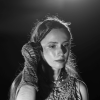 Katarina Gryvul
Katarina Gryvul 